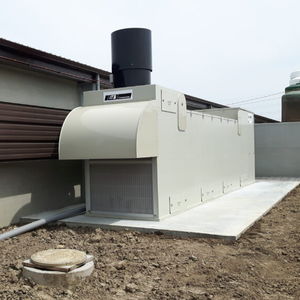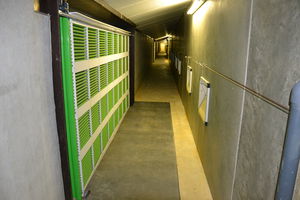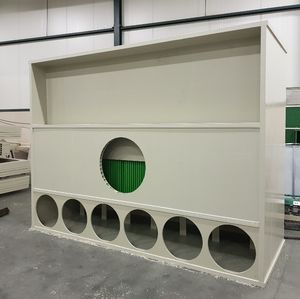
Tubular heat exchanger AIR2for farm buildings
Add to favorites
Compare this product
Characteristics
- Type
- tubular
- Application
- for farm buildings
Description
•Heating and air cleaning in one concept
•High thermic efficiency
•Low maintenance
•Improved overall climate
Heat recovery and air cleaning in one concept
More heat in poultry houses offers farmers the chance to ventilate better and get rid of cold, moisture and draughts in their animals.. ITB Climate presents its AIR2-DS Heat Exchanger. With the Air2-DS, poultry farmers recover heat to the outgoing barn air and reduce 70% ammonia and 50% particulate matter.
Energy savings and a healthier climate
Poultry produce a lot of body heat, which now usually leaves the house via the ventilation air. ITB’s AIR2-DS Heat Exchanger is made up of extra-long horizontally arranged fins. The outgoing stall air is drawn past the fins. The incoming air is drawn through the same fins and then blown into the barn. By crossing cold incoming and warm outgoing air flows, heat is transferred. With the heat recovered from the AIR2-DS Heat Exchanger, livestock farmers reduce their energy consumption by up to 60%. Thus, they create a better and uniform barn climate with optimal temperature and humidity. Animals distribute themselves better over the space and experience less stress.
Reduction of fine dust and ammonia
The Air2-DS Heat Exchanger is officially registered to reduce 70% ammonia and 50% fine dust in poultry houses. Using a special ventilation technique, heated ventilation air is distributed over the litter layer. CO2 and moisture are removed at animal level. This results in a healthier and more animal-friendly climate.
Catalogs
Related Searches
- Treatment system
- Evaporative cooling pad
- Barn evaporative cooling pad
- Ventilation air inlet
- Wall-mounted air inlet
- Exhaust air chimney
- Plate heat exchanger
- Farm building air inlet
- Heat exchanger for farm buildings
- Radiator
- Light trap
- Exhaust air chimney for farm buildings
- Farm building light trap
- Air treatment system
- Exhaust air chimney with intake
- Lateral air inlet
- Tubular heat exchanger
- Poultry house heating system
- Plastic heat exchanger
*Prices are pre-tax. They exclude delivery charges and customs duties and do not include additional charges for installation or activation options. Prices are indicative only and may vary by country, with changes to the cost of raw materials and exchange rates.









